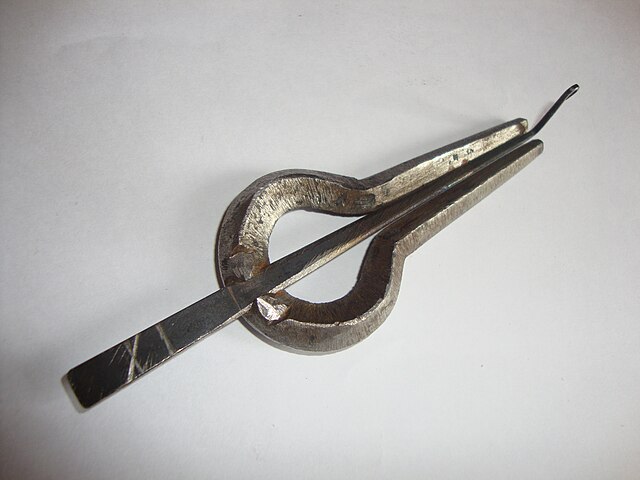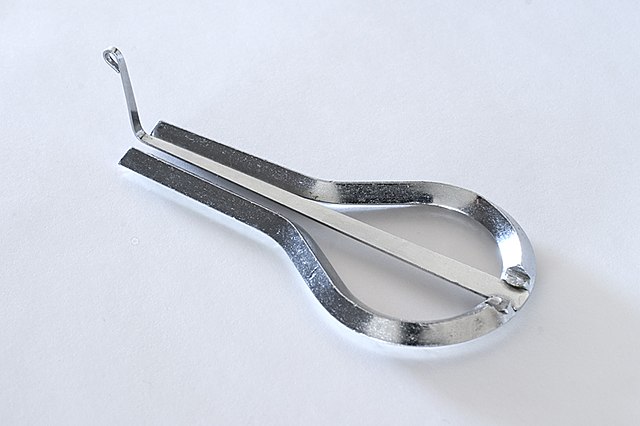The morsing is an instrument similar to the Jew's harp, mainly used in Rajasthan, in the Carnatic music of South India, and in Sindh, Pakistan. It can be categorized under lamellophones, which is a sub-category of plucked idiophones. The instrument consists of a metal ring in the shape of a horseshoe with two parallel forks which form the frame, and a metal tongue in the middle, between the forks, fixed to the ring at one end and free to vibrate at the other. The metal tongue, also called the trigger, is bent at the free end in a plane perpendicular to the circular ring so that it can be struck and made to vibrate.
Morsing
Morsing (Jaw Harp)
Morsing by Srirangam Kannan
The Jew's harp, also known as jaw harp, juice harp, or mouth harp, is a lamellophone instrument, consisting of a flexible metal or bamboo tongue or reed attached to a frame. Despite the colloquial name, the Jew's harp most likely originated in Siberia, specifically in or around the Altai Mountains, and is of Turkic origin and has no relation to the Jewish people.
A novelty Jew’s harp sold in the U.S.
Slovak "drumbľa"
Angel playing a jew's harp at the Minstrels' Gallery at Exeter Cathedral, 13th/14th Century.
Young Man with joodse harp by Dirck van Baburen, 1621







